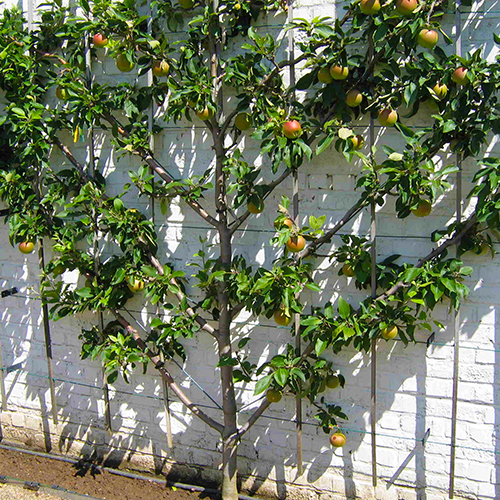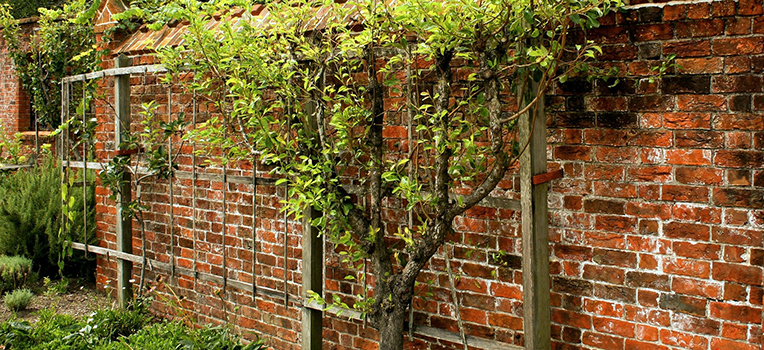Everything you need to know about espalier
What is espalier?
Espalier is a way of training trees, shrubs, and woody vines against a flat surface, like a wall, fence or trellis. It's an ancient growing technique that originated in the small courtyards of ancient Rome and is considered by many to be an art form.
Why espalier?
Espalier not only looks beautiful and decorative, it’s practical and space saving. With the sprawling Aussie backyard becoming a luxury and balcony and courtyard gardens becoming more popular, espalier is now, more than ever, a perfect solution to growing your favourite fruiting and flowering trees. Best of all, you can still enjoy full size fruit and flowers.

What you will need
- Your plant of choice. See below for suitable fruiting and flowering options.
- Consider what you will grow your plant on. Walls, fences, trellis, wire, lattice and mesh are all good options.
- A high-quality potting mix, as this is where your plant will get all of its nutrients from.
How to espalier
Chris England from Merrywood Plants is an espalier expert with 25 years' experience and has some tips for creating your own espalier.
- Leave some room between the trunk and the flat surface behind.
- Before planting, tease out the roots, so they spread easier and add liquid fertiliser to help the plant settle into its new home. The exception to this is if the potting mix already has added fertiliser.
- Espaliered plants need to be attached to something sturdy. If using a freestanding flat surface, like a trellis, tie the trunk of the plant onto the back of it, so it's sturdy, and always use a flexible tie.
- Look for leading branches and attach these branches horizontally (as much as possible) to the flat surface. Attach halfway down the branch and again at the end. What you're trying to do is ensure the plant’s sap runs horizontally so as not to encourage vertical growth.
- Rather than pruning new growth, train it. When any stem is about 20 centimetres long, train it by attaching it back to the flat surface. Any branches that look out of place can be trimmed.
Pests and disease
Address any pests and disease as you would a regular plant.
What plants can I espalier?
Flowering trees
- Bay tree
- Bougainvillea
- Camellia
- Crab apple
- Crepe myrtle
- Flowering almond
- Flowering apricot
- Flowering cherry
- Flowering peach
- Flowering plum
- Gardenia
Fruiting trees and edible plants
- Apple
- Blueberry
- Citrus (orange, lemon, limes)
- Cumquat
- Medla
- Nectarine
- Olive
- Pear
- Plum
- Quince
- Rosemary
 Choosing the right pot
Choosing the right pot
When choosing the right pot, keep in mind that once your plant is settled in its new home, it’s very hard to move, so give it a pot that allows the plant to grow. Chris recommends a rectangular planter which will give width and depth. If the pot is too small, your plant will be pot bound and dry out. If you get the right size pot, your plant will be happy for many years. Dwarf plant varieties don’t need as much space. As a general rule of thumb, your pot should be around three times bigger than the original pot it came in.
Caring for your espaliered plant
Watering
Water at least once a day in summer to avoid your plant drying out.
Feeding
Feed your plant monthly with a liquid fertiliser and a slow-release fertiliser three times per year. If planting a citrus or fruiting tree, use a specially-formulated citrus and fruit fertiliser.
Position
Most fruiting trees need full sun but as always, check the label before positioning your plant.
Harvesting
Harvest your espaliered plant as you would a regular plant. When the fruit is ripe and colourful, it’s ready to be picked.
If you’d prefer to buy a ready-made espaliered plant, check out our great range instore.

